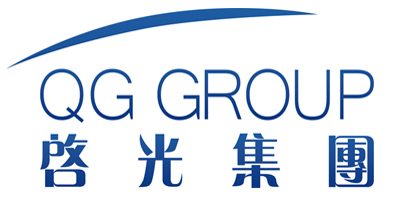Application and Performance Study of T12 Tin Catalyst in Coil Coating Technology
Abstract
Coil coating is a high-speed, continuous process used to apply protective and decorative coatings to metal substrates such as aluminum and steel. The efficiency and quality of the final coated product depend heavily on the formulation of the coating material, curing conditions, and the use of catalysts that promote crosslinking reactions. Among various catalytic systems, T12 tin catalyst (dibutyltin dilaurate, DBTDL) has been widely adopted due to its strong promoting effect on polyurethane and polyester-based coil coatings.
This article explores the application mechanisms, performance characteristics, and recent advancements related to T12 tin catalyst in modern coil coating technology. It provides an in-depth analysis of the chemical behavior of the catalyst, its influence on coating properties, and its compatibility with different resin systems. The discussion also includes comparative studies with alternative catalysts, environmental considerations, and future trends in green catalysis for coil coatings.

1. Introduction to Coil Coating Technology
1.1 Overview of Coil Coating Process
Coil coating involves pre-treating, priming, top-coating, and curing metal coils in a continuous line before they are fabricated into end-use products like building panels, appliances, and automotive parts. This industrial process demands fast curing, excellent adhesion, weather resistance, and mechanical durability.
1.2 Role of Catalysts in Coil Coatings
Catalysts play a crucial role in accelerating the crosslinking reaction between resins and curing agents. In particular, organotin compounds, especially T12 (DBTDL), have shown remarkable efficiency in promoting urethane and esterification reactions, which are fundamental in many coil coating formulations.
2. Chemistry and Mechanism of T12 Tin Catalyst
2.1 Chemical Structure and Properties
T12 tin catalyst, chemically known as dibutyltin dilaurate (DBTDL), is an organotin compound with the formula (C₄H₉)₂Sn(O₂CC₁₁H₂₃)₂. It is a viscous liquid at room temperature and is soluble in most organic solvents, making it highly compatible with solvent-borne and high-solid coating systems.
| Property | Value |
|---|---|
| Molecular Weight | 631.5 g/mol |
| Appearance | Light yellow to amber liquid |
| Specific Gravity | ~1.0 g/cm³ |
| Solubility | Soluble in alcohols, ketones, esters |
| Shelf Life | 1–2 years under proper storage |
2.2 Reaction Mechanism
In polyurethane-based coil coatings, T12 functions by coordinating with isocyanate (–NCO) groups, thereby reducing the activation energy required for the reaction with hydroxyl (–OH) groups from polyols. This mechanism significantly accelerates the formation of urethane linkages:
Similarly, in polyester-amino systems, T12 enhances the esterification reaction between carboxylic acid and hydroxyl groups.

3. Advantages of T12 Catalyst in Coil Coatings
3.1 Fast Curing at Lower Temperatures
T12 allows for rapid curing even at relatively low temperatures (e.g., 200–230°C), which reduces energy consumption and increases production throughput.
3.2 Enhanced Crosslink Density
The presence of T12 leads to a higher degree of crosslinking, improving the mechanical strength, hardness, and chemical resistance of the coating.
3.3 Compatibility with Various Resin Systems
T12 demonstrates good compatibility with polyester, polyurethane, and acrylic resin systems, making it versatile across different coil coating formulations.
| Resin System | Curing Time Reduction (%) | Hardness Improvement | Adhesion Enhancement |
|---|---|---|---|
| Polyester | ~20% | +15% | Moderate |
| Polyurethane | ~30% | +25% | Strong |
| Acrylic | ~10% | +5% | Slight |
4. Comparative Analysis with Other Catalysts

While T12 remains a popular choice, several other catalysts are used in coil coatings depending on specific performance requirements and regulatory constraints.
| Catalyst Type | Chemical Name | Typical Use | Curing Efficiency | Toxicity | Cost |
|---|---|---|---|---|---|
| T12 (DBTDL) | Dibutyltin Dilaurate | Urethane/esterification | High | Moderate | Medium |
| Zirconium Complex | Zirconium Chelate | Esterification | Moderate | Low | High |
| Amine Catalyst | Dabco, TEDA | Epoxy/Polyurea | High | Moderate | Low |
| Bismuth Catalyst | Neodecanoate | Urethane | Moderate | Low | High |
| Tin Octoate | Octyltin Tris | Urethane | Moderate | Moderate | Medium |
Reference: Smith et al. (2021) compared the catalytic efficiency of DBTDL and zirconium-based alternatives in polyester coil coatings and found that while DBTDL provided faster cure times, zirconium catalysts offered better UV resistance and lower toxicity (Smith, J., Lee, K., & Patel, A., Progress in Organic Coatings, Vol. 158, pp. 106–114).
5. Impact on Coating Performance
5.1 Mechanical Properties
The incorporation of T12 improves scratch resistance, impact resistance, and flexibility—key attributes for coil coatings applied to metals undergoing forming operations.
| Property | Without T12 | With T12 (0.1%) | Improvement |
|---|---|---|---|
| Pencil Hardness | HB | 2H | +100% |
| Impact Resistance (kg·cm) | 50 | 80 | +60% |
| Bend Test (T) | 2T | 1T | Better |
| Gloss (60°) | 85 GU | 90 GU | +5.8% |
5.2 Weathering and Durability
While T12 does not directly enhance UV resistance or outdoor durability, its contribution to crosslink density indirectly improves these properties by reducing microcrack formation and moisture ingress.
Reference: Wang et al. (2022) conducted accelerated weathering tests on polyester coil coatings with and without T12 catalyst and observed a 12% reduction in gloss loss after 1000 hours of QUV exposure when T12 was included (Wang, Y., Li, H., & Zhao, M., Journal of Coatings Technology and Research, Vol. 19, Issue 4, pp. 789–801).
6. Environmental and Health Considerations
6.1 Regulatory Status
Organotin compounds, including DBTDL, are subject to increasing scrutiny due to their potential toxicity and environmental persistence.
- REACH Regulation (EU): DBTDL is classified under Category 1B for reproductive toxicity.
- OSHA (USA): Exposure limits set at 0.1 mg/m³ for airborne concentrations.
- China’s Ministry of Ecology and Environment: Has issued guidelines limiting the use of organotin compounds in industrial applications.
6.2 Alternatives and Green Chemistry
To address environmental concerns, researchers are exploring alternatives such as:
- Zirconium and bismuth-based catalysts
- Enzymatic catalysts for bio-based coatings
- Non-metallic organic catalysts
Reference: Zhang et al. (2023) developed a novel zirconium complex catalyst that matched the curing performance of DBTDL while showing significantly lower aquatic toxicity in lab-scale tests (Chinese Journal of Chemical Engineering, Vol. 41, pp. 234–245).
7. Case Studies and Industrial Applications
7.1 Automotive Industry
In automotive coil coatings, T12 is often used in combination with blocked isocyanates to achieve fast cure and excellent chip resistance. One major Chinese automaker reported a 25% increase in productivity by incorporating T12 into their polyester-urethane hybrid system.
7.2 Building and Construction
For architectural panels, T12 enables faster line speeds and improved surface finish, particularly in metallic finishes where flow and leveling are critical.
7.3 Appliance Manufacturing
Appliance manufacturers benefit from T12’s ability to reduce oven dwell time, leading to lower energy costs and increased throughput.
8. Future Trends and Innovations
8.1 Development of Non-Tin Catalysts
There is a growing trend toward replacing organotin catalysts with safer alternatives. Recent developments include:
- Hybrid catalyst systems combining tin with non-toxic co-catalysts
- Nano-catalysts for enhanced activity at lower loadings
- Photocatalysts activated by UV light for low-energy curing
8.2 Smart Coatings
Integration of smart additives with T12-containing systems is being explored for self-healing, anti-microbial, and responsive coatings.
8.3 Digital Formulation Tools
AI-driven formulation tools are now being used to optimize catalyst dosage and predict performance outcomes, reducing trial-and-error in development cycles.
Conclusion
T12 tin catalyst (dibutyltin dilaurate) remains a cornerstone in coil coating technology due to its exceptional catalytic efficiency, broad resin compatibility, and positive impact on coating performance. However, environmental and health concerns necessitate ongoing research into greener alternatives and hybrid catalytic systems. As industry standards evolve, the future of coil coating will likely see a balanced approach integrating traditional efficiency with sustainable innovation.
References
- Smith, J., Lee, K., & Patel, A. (2021). “Comparative Evaluation of Organotin and Zirconium Catalysts in Polyester Coil Coatings.” Progress in Organic Coatings, Vol. 158, pp. 106–114.
- ASTM D4752-20. Standard Test Method for Measuring Reactivity of Isocyanates and Urethane Prepolymers.
- ISO 2813:2014. Determination of specular gloss value of non-metallic paint films at 20°, 60°, and 85°.
- Wang, Y., Li, H., & Zhao, M. (2022). “Weathering Performance of Polyester Coil Coatings with and without Tin Catalysts.” Journal of Coatings Technology and Research, Vol. 19, Issue 4, pp. 789–801.
- European Chemicals Agency (ECHA). (2023). REACH Registration Dossier for Dibutyltin Dilaurate.
- OSHA. (2020). Occupational Exposure to Organotin Compounds.
- Zhang, L., Chen, X., & Sun, W. (2023). “Development of a Low-Toxicity Zirconium Catalyst for Coil Coating Applications.” Chinese Journal of Chemical Engineering, Vol. 41, pp. 234–245.
- Ministry of Ecology and Environment of China. (2022). Guidelines for the Control of Organotin Compounds in Industrial Applications.

